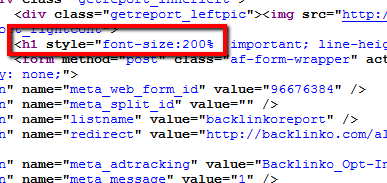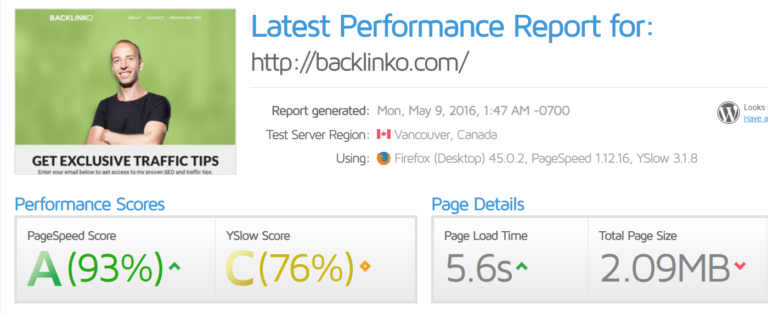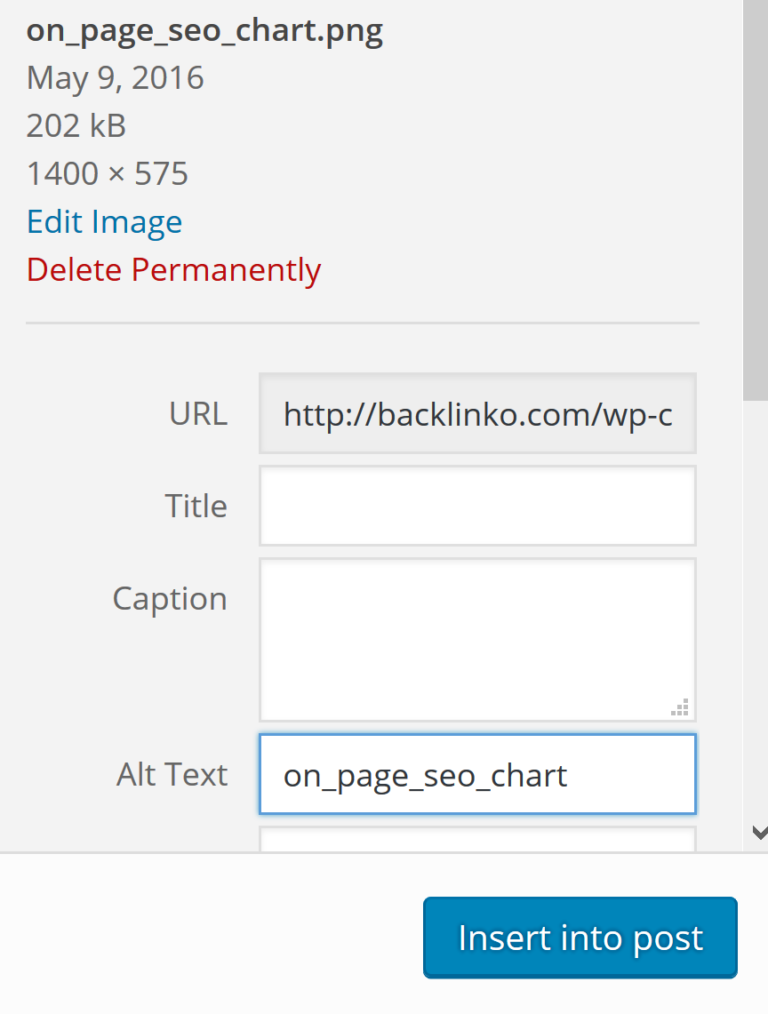Envelop Your Website Post Title within an H1 Tag
The H1 tag is your headline tag” that is “. Most CMS’s (like WordPress) automatically add the H1 tag to your blog post title. You place if that’s the case.
But this setting is overridden by some themes. Assess your site’s code to ensure your title gets the H1 adore it deserves. I used to suppose that WordPress hooked my post names up with H1 tags until I really looked at my site’s code.
Afterward I understood that WordPress themes occasionally use text size to improve. For instance, my e-mail opt-in area was once wrapped in an H1 tag: Worth checking out your site’s code to be sure you only have one H1 tag per page it’s. And that H1 tag should contain your target key word.

Wrapping Subheadings in H2 Tags
In at least once subheading…, contain your target key word and roll it.
This undoubtedly won’t make or break your on-page SEO attempts. But my tests have shown me that a dent can be made by wrapping your objective key word in an H2 tag.
Here’s an example of this strategy in action (target keyword=”SEO strategy”):

Use Outbound Links
This can be a simple, white hat Search Engine Optimization strategy to get more traffic. Outbound links to associated pages helps Google figure out your page’s subject. It also shows Google your page is a hub of quality info.
Not linking out might be the #1 on-page SEO blunder that I see folks make. I attempt to use 2-4x outbound links per 1000 words. That’s a good guideline for most sites.
Bear in mind the sites you link out to reflect on you. So make sure whenever potential to link out to power websites.
Boost Website Speed
Google has stated on the record that page loading speed is an SEO rank signal. You are able to hike your site speed by compressing images using a CDN, and switching to quicker hosting.
Make certain your website doesn’t take more than 4 seconds MunchWeb found that 75% of users wouldn’t re visit a website that took to load. It is possible to easily assess your website’s loading speed using the outstanding GTMetrix.com: CDNs and cache plugins are fine, but investing in premium hosting is the #1 thing you can do to generate your site faster.
$5/month hosts are adequate for the cash you’re paying. However they don’t hook you up with serious speed. I’ve actually dropped load times from 6 seconds to less than 2 seconds by changing from a $5 shared hosting plan to a topnotch host (I use Combination Hosting here at Backlinko). From an SEO and conversion point of view, the ROI of premium hosting can’t be overcome.

Use Social Sharing Buttons
Societal signals might not play a direct role in ranking your website. But shares that are social generate more eyeballs in your articles.
And the more eyeballs you get, the more likely someone is to link to you. So don’t be bashful about placing social sharing buttons conspicuously on your own website. In fact, a study by BrightEdge found that social sharing cans raise .
Social signs aren’t an essential part of the Google algorithm. But you may be given an indirect rankings boost by social shares on sites like Facebook, Twitter and Google.
Picture Optimization
Make certain at least one picture file name contains your target keyword (for example, on_page_SEO.png) and your target key word is part of your image Alt Text.
Another motive to optimize your images for Search Engine Optimization: search engines are given of what your page is about…which can help it rate in organic search another hint by it.
“green widgets and “blue widgets” ” it tells them when Google sees pictures with alt text : “this page is about widgets”.

Use SEO-Friendly URLs
Google has said that the first 3-5 words in a URL are given more weight. So make your URLs sweet and short. And always contain your target keyword in your URL. In other words: Avoid horrible URLs: domain.com/p=123 Or long URLs: domain.com/8/6/16/cat=SEO/on-page-seo-is-so-amazing-omg-its-the-best
No comments:
Post a Comment